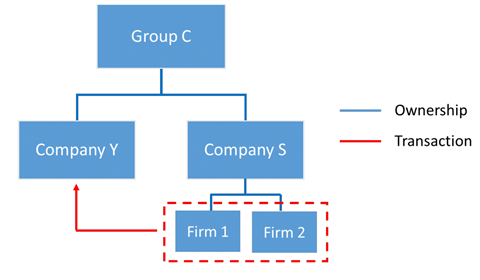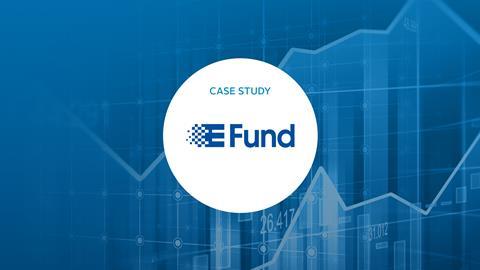| ORGANISATION DETAILS | |
|---|---|
| Name | E Fund |
| Signatory type | Asset manager |
| Region of operation | China |
| Assets under management | US$408bn (as of 30 September 2021) |
| COVERED IN THIS CASE STUDY | |
|---|---|
| Asset class and strategy | Listed equity (active investing) |
| Geography | China |
| ESG issues | Governance issue: interests of minority shareholders and related-party transactions |
Why we do Stewardship?
At E Fund Management Co., Ltd. (E Fund), we are committed to achieving long-term and sustainable investment returns for our clients. As a responsible investment practitioner, E Fund is determined to promote the high-quality growth of investee companies and help facilitate the sustainable development of our society. To do so, we act as an active owner working collaboratively with companies to improve the sustainability of their business practices and encourage positive change over time. We believe that companies with informed and involved shareholders are more likely to achieve superior long-term performance.
How we do it?
ESG assessment is an integral part of our research and investment processes. The relevant ESG factors are identified and assessed using our proprietary ESG scoring system. Where we identify gaps between the company’s approach and our expectations regarding environmental, social or corporate governance (ESG) issues, we may engage with the company to support its long-term development and value creation. This can occur either with investees who violate the principles and expectations described in our Responsible Investment Statement, investees for whom we identify opportunities for enhanced value creation through improved practices, or companies we would potentially invest in once relevant ESG issues are addressed.
Our research and investment team and ESG team carry out engagement together. We undertake constructive dialogue with the companies’ management team to address material ESG issues and integrate the conclusions into our financial analysis, valuation, investment recommendation and investment decision regarding the company.
Since some Chinese companies are at an early stage of development, they will have issues such as imperfect corporate governance, ignoring minority shareholders and unclear and insufficient disclosure. At E fund, we hold discussions of varying scope and depth with companies at different development stages and help them improve governance step by step. We keep engagement records, update engagement goals, and track companies’ progress to inform our investment decision-making and stewardship. Although the vast majority of A-share listed companies are receptive to investor suggestions, for those unwilling to act on investors’ advice or who pay insufficient regard to the rights and interests of minority shareholders, E Fund may escalate engagement and vote proxies in the best interest of our clients during company meetings.
Case study
An engagement with a listed company to improve governance
One of our investees, an A-share listed agricultural chemical company (Company Y), proposed a related-party acquisition plan to acquire two agricultural firms owned by Company S. Both Company Y and Company S belong to the same holding group, Group C (see Chart).
Chart: Illustration of the M&A transaction

We believed the M&A initiative would create synergies between Company Y and the acquired firms and would help company Y develop into a comprehensive agricultural chemical business platform, which would be beneficial to us as shareholders in the long run.
After we scrutinised the details of the M&A proposal, we took the view that the profit guarantee agreement could be further improved. We believed that, instead of returning all the excess profit to Company S, it would be better to share that excess between both Company Y and Company S. This would further incentivise Company Y to drive the growth of the acquired firms, and ultimately benefit both Company Y and Company S.
We arranged a meeting with the senior management of Company Y to share our thoughts, and suggested Company Y to consider revising the profit guarantee agreement. During the meeting, the company’s management shared their considerations candidly and thoroughly and welcomed our suggestions. Within two weeks, Company Y responded to our suggestions and announced an enhanced plan, which we then voted to support.
In the next few months, we followed up with Company Y on additional measures to enhance its corporate governance, and we were happy to discover that Company Y created additional board roles and clarified board members’ roles and mandates to facilitate the fulfilment of the board’s oversight responsibility. We supported the relevant subsequent resolutions.
From our experience, most companies in China are increasingly open to investors’ suggestions. The key to conducting successful engagement is candid and constructive dialogue between investors and investees.
Challenges and recommendations
The vast majority of A-Share listed companies are willing to communicate with their investors. However, some of them are not used to such practices, and may misunderstand investors’ intentions in doing so. Investors should take the initiative and communicate proactively with the investee company’s investor relations team or management, and state clearly the purposes of the engagement before offering suggestions. This helps align the interests of all parties and make investors’ suggestions more acceptable to investees.
With companies that are unwilling to act on investors’ advice or which advance proposals that hurt minority shareholders’ interests, investors might consider escalating their engagement actions and contemplate collaborative engagement, casting votes against management, reducing their holdings or ultimately divesting.












